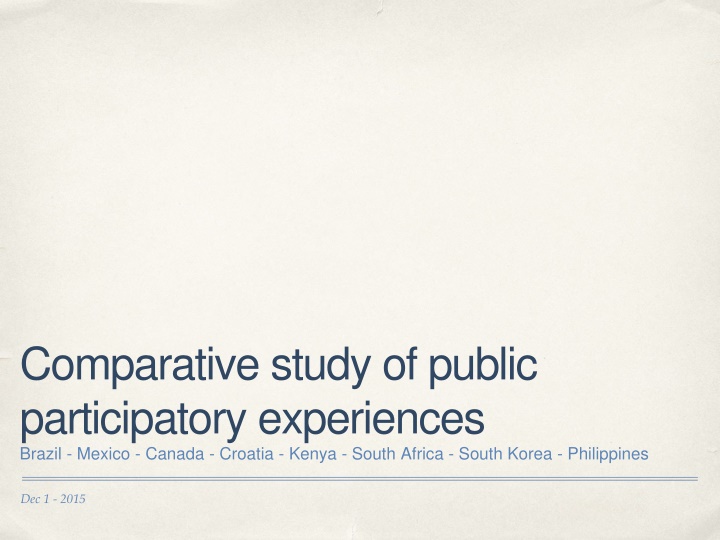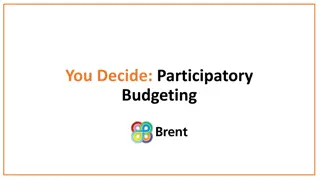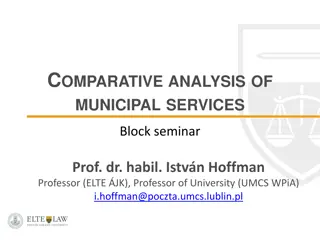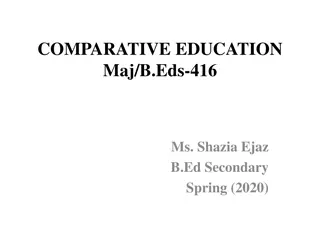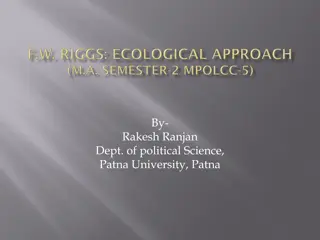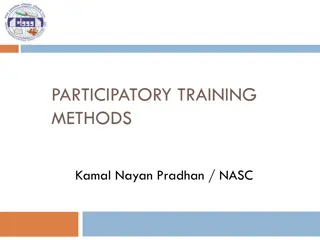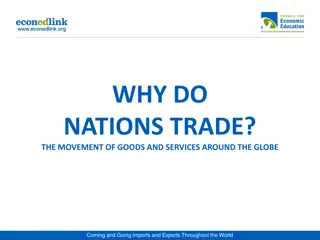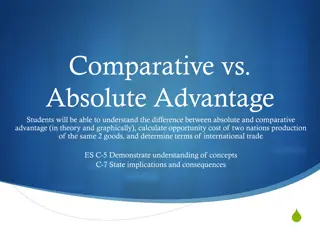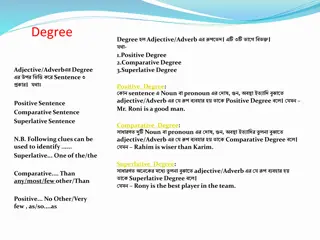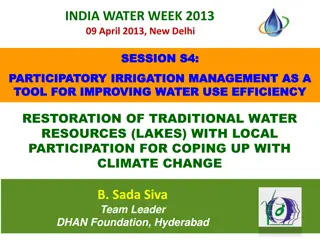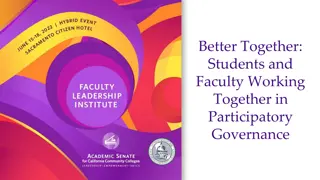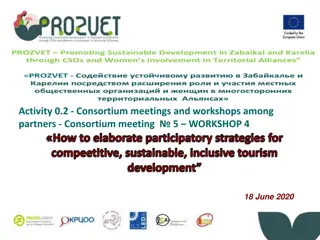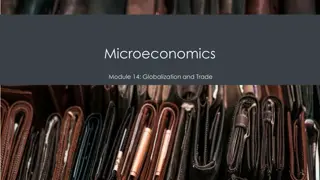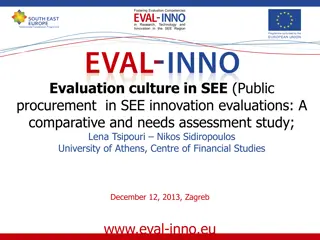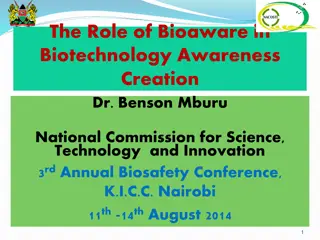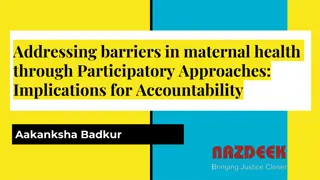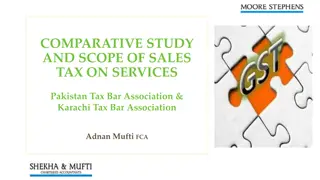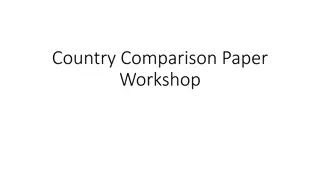Comparative Study of Public Participatory Experiences in Various Countries
This study compares public participatory experiences in Brazil, Mexico, Canada, Croatia, Kenya, South Africa, South Korea, and the Philippines, evaluating how each case defines public participation, distinguishes between access to budget information and participation processes, and categorizes institutional and extra-institutional participation. It assesses the formal participation processes and their actual implementation, as well as the representativeness of these initiatives at national and subnational levels.
Download Presentation

Please find below an Image/Link to download the presentation.
The content on the website is provided AS IS for your information and personal use only. It may not be sold, licensed, or shared on other websites without obtaining consent from the author.If you encounter any issues during the download, it is possible that the publisher has removed the file from their server.
You are allowed to download the files provided on this website for personal or commercial use, subject to the condition that they are used lawfully. All files are the property of their respective owners.
The content on the website is provided AS IS for your information and personal use only. It may not be sold, licensed, or shared on other websites without obtaining consent from the author.
E N D
Presentation Transcript
Comparative study of public participatory experiences Brazil - Mexico - Canada - Croatia - Kenya - South Africa - South Korea - Philippines Dec 1 - 2015
Objective Does each individual case clearly define public participation? Does each individual case distinguish between public access to budget information (transparency) and public participation processes? Does each individual case distinguish between institutional (structured) and extra-institutional participation? Does each individual case provide evidence about how formal participation processes are supposed to work and how they actually work? How representative these initiatives are of the broader national and subnational levels (how many states, cities, municipalities and counties they include).
Justification Answering these questions is a pre-condition to further assessments of successes and failures as well as impacts and outcomes of public participatory experiences in these countries and elsewhere.
Does each individual case clearly define public participation? Mexico no South Korea no Philippines no Distinguish between direct participation and institutionalized participation. Brazil no no South Africa Kenya no Croatia yes Canada no
Does each individual case distinguish between public access to budget information (transparency) and public participation processes? Limited = degree of details There is a distinction between public oversight (social control) X participatory mechanisms (FOIA and OGP both feature as social control mechanism). Mexico no South Korea no Specific section for participatory experiences. Transparency cases are presented in another section (historical overview). Philippines limited There is a distinction between public oversight (social control) X participatory mechanisms (FOIA and OGP both feature as social control mechanism). Brazil no South Africa no Kenya no Croatia no Transparency and participation are classified as participation-related reform. Canada no
Does each individual case distinguish between institutional (structured) and extra- institutional participation? Considering the emphasis on informal meetings between policy-decision and civil society, it is possible to conclude that the most examples should be classified as extra-institutional participation. Mexico no We can conclude that most part of the initiatives are structured as they are results of the government actions. South Korea no Philippines no We can conclude that most part of the initiatives are structured as they are results of the government. Participatory Budgeting and Public Policy conferences, for example, are presented as structured mechanism while strikes and social mobilization as extra-institutional participation. Brazil Yes Extra-institutional participation is presented as more effective that institutional one. Yes South Africa Lack of definition on participation hinder the comprehension of extra-institutional participation as a real public participatory experience. As most of the experiences originated in the constitution it is clear that all cases are structured participation, with exception of the Institute of Social Accountability (TISA). Kenya no Croatia no The focus of the paper is on the institutional venues of participation. Canada no
Does each individual case provide evidence about how formal participation processes are supposed to work? Limited = degree of details There is some description on the windows of opportunity for participation in the Federal Budget Process and in the legislative. However the information is not structured and organized in order to present how the formal participation processes are supposed to work. Mexico Yes The evidence is related to the three plus one fiscal reform carried out by Roh Moo-hyun. There is more a description of the reform and the methods and processes of resources allocation than a presentation of participation evidence. South Korea Yes Philippines Yes Significant quantity of examples but no in-depth analysis. More descriptive than explanatory. Brazil Limited The paper focuses more in how the experiences actually works and less in how they were supposed to work. As the emphasis of the working papers is on the extra-institutional participation, the description of the structured cases is not deep enough. South Africa Limited Kenya Yes Constitution of 2010 offers windows of opportunity for public participation. The study developed a more detailed classification of the experiences organized by several topics such as policy type, scope, quantity and quality, meaningfulness, efficiency etc, however as the other studies did not use the same classification it difficult to make an analytical comparison. Croatia Yes The experiences are presented as windows of opportunity within the budgetary process.The study developed a particular methodology incorporating the GIFT principles to assess the quality of public participation, but as the other studies did not use the same classification it is difficult to make an analytical comparison. Canada Yes
Does each individual case provide independent evidence of how formal public participation in budget processes actually work in practice? Limited = degree of details There is some evidence on how participation actually works once the report highlight that the majority of participation in the fiscal policy budget process occurs though informal meeting between technocrats and experts, academics and representatives of NGOs. As the study refers to some independent works (such as Ackerman, 2003; Cejudo, 2015; Mej a, 2015 as well as Mexico`s ranking in the Open Budget Survey), it`s possible to observe a less biased evidence. Mexico Limited There is some evidence on how participation actually works as the report highlight that the majority of participation in the fiscal policy budget process occurs though meeting between technocrats and experts, academics and representatives of NGOs and that there is limited participation by general citizens. However, it is not clear what the source of the information are. South Korea Limited There are some evidence on how participation actually works, however it is descriptive and it is not possible to distinguish between how participation is supposed to work and how it actually works. Philippines Limited Furthermore, the study indicates that a handful of them are in their experimental phase therefore it`s not clear whether they are indeed operational in most part of the localities or not. Lastly, although there is a bibliography few bibliographical references in the text, difficult to identify for possible biases. Brazil Yes As the emphasis of the working papers is on the extra-institutional participation, the description of the structured cases in not deep. The study highlights that extra-institutional participation is working better and we can conclude that institutional participation is not working well. South Africa Limited The description of the extra-institutional cases is well detailed. Kenya limited The focus of the study is on the windows of opportunity for public participation and there is no in-depth description about how participation actually works in practice. Croatia Limited The author addresses the weakness of the experiences and the lack of participation mechanisms during the process. But there is little information about how participation actually works. Canada Limited
NATIONAL BUDGET Does each individual case distinguish between executive and legislative? Mexico Yes South Korea Yes Philippines yes Brazil Yes There is also a section dedicated to the Judiciary. South Africa No Kenya Yes Croatia Yes Canada Yes
SUBNATIONAL BUDGETS (STATES AND MUNICIPALITIES) Does each individual case present how many states, cities, municipalities and counties the evidence include? The study states that Mexico City, Oaxaca, Durango, Guerrero and Michoac n have participatory budgeting program. However, there is no information about that, only a briefly information about Mexico City experiences. Mexico Limited South Korea No Philippines Limited Many experiences are in experimental phase. Not clear if they are active in most public agencies and localities. Brazil Yes The study presents substantial data on the scopes and shows an increase of participatory processes. There is only a brief description about Cape Town, however the study states that the case is very recent and its potential remains unclear. South Africa Limited Kenya Limited The study mention some counties but the information about the experiences in these counties is limited. Croatia Limited There is a case study on City of Pazin. Canada Limited There are some case studies in cities and provincial governments.
Conclusions Each working paper developed its own methodology, which prevents a comprehensive assessment of the findings, as well as to identify successes and failures. There is no clear definition on transparency and participation neither a clear distinction between them. Further analysis will require a similar methodological framework to be applied for all the cases. The methodology should address a conceptualization on transparency and participation and a distinction between them. Moreover the methodology should include a standard to register the evidence considering representativeness issues as well as how the experiences are supposed to work and how they are actually working. The methodology will be necessary to the assessment of their impacts and results.
